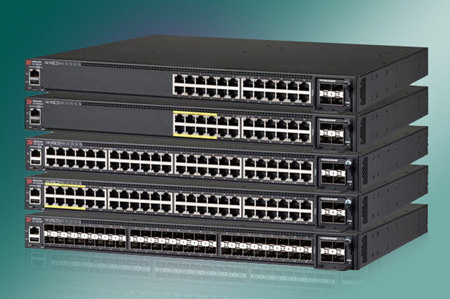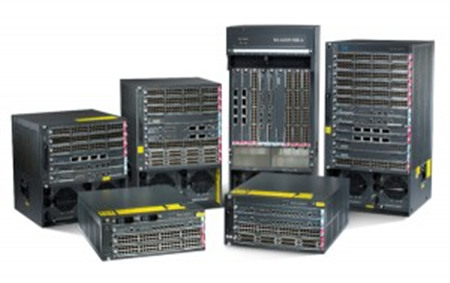Maximizing scalability and optimizing performance are two paramount factors when you design or upgrade your network. It is hard to find the right balance. Given that you need more than 48 ports in a wiring closet, but you could not decide which type of switches to buy. Stacking switch or non-stacking switch? Or does a modular chassis switch solution make more sense? In this article, we would make a comparison between stacking and chassis access switches and guide you to make an appropriate decision.
Over the years, stacking network switches have been highly favored by lots of Ethernet users and been a core component of an enterprise-grade switch. So what is reason for the popularity of stacking switches? By using stacking switches, we can add ports as we need them by simply purchasing another switch and adding it to the stack. We can stack up to nine Cisco 3750-X switches and have 432 x 10/100/1000 ports and 18 x 10 Gbps ports. We can do this using only 9RU’s of rack space. A chassis would require over double the rack space to achieve this access port density. This makes these switches very popular as top-of-rack switches in the data center.

Figure1: Brocade Stackable Switches (Resource: www.Brocade.com)
- Pay-as-you-grow
- Small Physical Footprint
- Convenient 100v Power Standard
- Virtual Chassis Capability
- Cross-Stack EtherChannel
- Management Difficulties
- Power Demands
- Software Complexity
- Instability
Chassis devices, often being “premier” devices, may offer software and/or hardware features unavailable on a stack. They are the flagship models of every vendor’s switching line. In contrast to the fixed configuration switches, it is engineered to operate as single integrated system. Configuring high availability is simple and it works every single time. A failed line card will not bring down the entire chassis. Additionally, a chassis will drive consistency in deployment.

Figure2: Cisco Chassis Switches (Resource: www.Cisco.com)
- Solid High Availability Features
- Modular Design
- Supports Wide Range of Line Cards
- Simple to Deploy
- Physical Space (twice the space of stacks)
- Expensive Power Supplies
- 220v Power for PoE Solutions
Just as the same as the every comparison on the similar kits, the decision really depends on your actual requirements. Once we have this, finding the right hardware is very straightforward. It is important to balance the cost of acquisition versus the cost of operations and impact to the business due to outages. And that is what we always thinking about when we make a decision.
In this article, we mainly provide the detailed information about stacking and chassis switches solutions, and offer you relatively enough information to help you to make a decision on choosing the best switching solutions for setting up or upgrading your network. There are too many variables to give a one-size-fits-all recommendation, but in general chassis Ethernet switches’ solutions are our preference. In addition, you should keep in mind that pricing should not be the focused too much. We can get both designs for a pretty reasonable price, regardless of requirements. If your network can benefit from both stackables and chassis, the chassis solution would be a good choice.
Related Article: Stacked switches vs Chassis switch at the core
